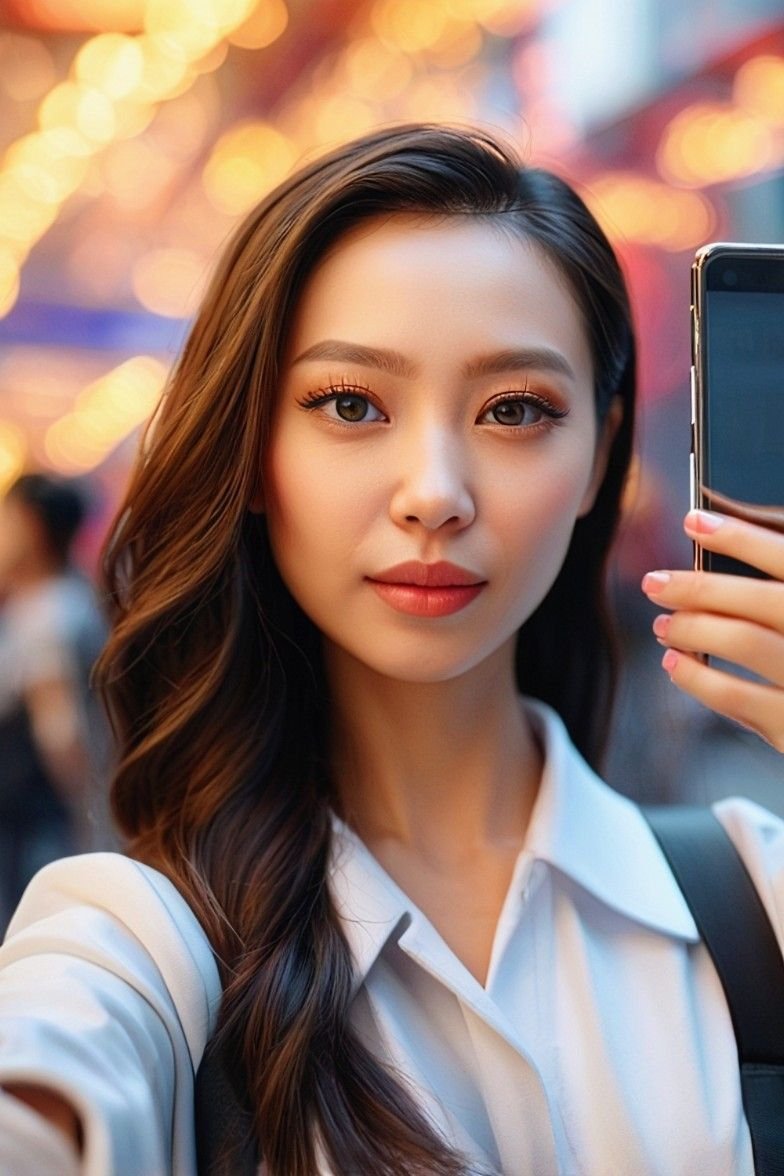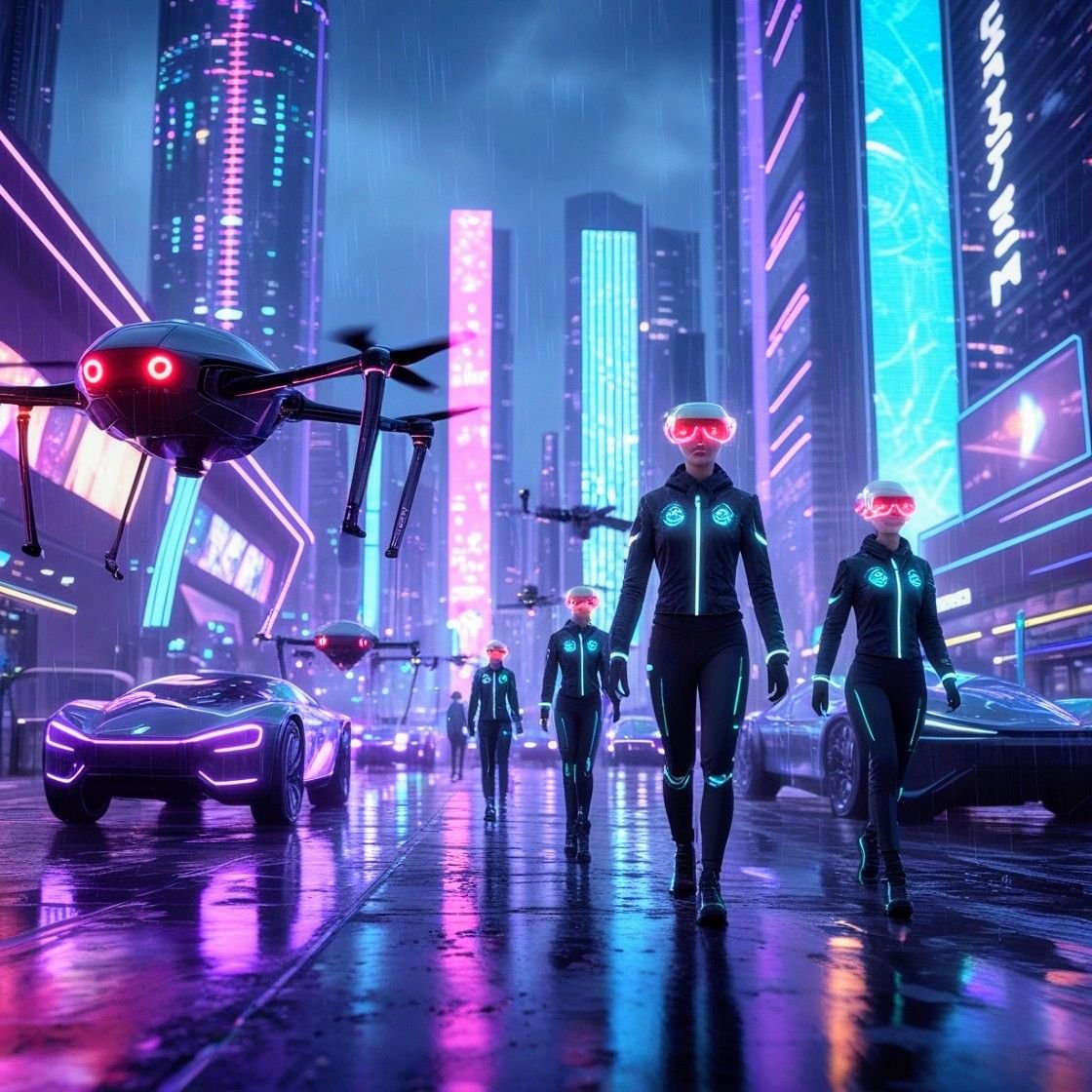AI-Generated Image. Article: How TikTok Influenced Millions Of People To Permanently Move To China by Tech Is The Culture
How TikTok Turned Viral Videos Into A One-Way Ticket To Move China
Move over, Marco Polo TikTok has become the 21st century’s ultimate travel agent. While the app is best known for dance challenges and cat memes, it’s quietly engineered a surprising phenomenon: convincing millions globally to pack their bags and move to China. From viral noodle tutorials to geopolitics-as-content, here’s how a 60-second video became the new passport stamp.
When Food Videos Sparked A Migration Craze (Let’s Call It The Noodle Effect)
It started with a dumpling. Or maybe a hot pot. TikTok’s algorithm, infamous for its addictive precision, began flooding Western feeds with hyper-stylized clips of sizzling street food, misty mountain villages, and neon-lit megacities. Creators like @ChiliOilChampion and @ShanghaiNights amassed millions of followers by framing China as a culinary and cultural wonderland, one where $1 buys a bowl of hand-pulled noodles and ancient temples coexist with robot servers.
The result? A surge in “food migration.” Take Brian Atabansi, a San Diego-based content creator who moved to Chengdu in 2024 after his viral series “Sichuan Spice or Bust” landed him sponsorship deals with Chinese tourism boards. “TikTok made China feel accessible, like a place where adventure was just a flight away,” he said.
But it’s not just influencers. Ordinary users began citing TikTok as their primary research tool for relocation. A 2025 survey by China’s Ministry of Culture found that 38% of recent expats credited “social media exposure” as their top motivator, with TikTok leading the pack.
How The TikTok Ban Backfired (The Geopolitical Plot Twist That Made Millions Want To Move to China)
When the U.S. government threatened to ban TikTok in 2024, it unintentionally supercharged China’s soft power. The move sparked a digital exodus, with over 700,000 Americans flocking to Chinese platforms like RedNote (Xiaohongshu) in a single week. Dubbed “TikTok refugees,” these users didn’t just switch apps; they dove headfirst into Chinese digital ecosystems, from e-commerce giant Taobao to travel app Ctrip.
“It felt like a middle finger to the U.S. government’s overreach,” said Stella Kittrell, a Baltimore creator who now partners with Chinese brands via RedNote. For many, the ban became a catalyst for deeper exploration. As one user quipped in a RedNote live chat: “If my government thinks China’s so dangerous, why does their food look 10x better?”
The irony? Beijing’s narrative of U.S. “bullying” amplified TikTok’s allure. Chinese state media framed the ban as proof of America’s decline, a theme that resonated with Gen Z users disillusioned by Western politics.
TikTok’s Role in China’s Talent Grab (From Screen To Shenzhen)
China’s “Low-Altitude Economy” initiative, a $207B plan to dominate drones, eVTOLs, and smart cities, found an unlikely recruiting tool: TikTok. Tech workers worldwide now flock to Shenzhen and Hangzhou, tempted by viral videos of AI robot dogs and flying taxis.
The platform’s #TechChina hashtag, which garnered 12B views in 2024, showcases China’s innovations while subtly promoting its visa policies. “I saw a clip of a robot serving bubble tea and thought, ‘That’s where the future is,’” said Priya Mehta, a software engineer who relocated from London to join ByteDance’s AI division.
Even China’s strict internet policies became a selling point. TikTok creators like @VPNLifeHacks built followings by teaching newcomers how to navigate the Great Firewall, turning censorship into a quirky challenge rather than a dealbreaker.
How TikTok Redefined China With It’s Futuristic Aesthetic Allure
Gone are the days of Mao suits and propaganda posters. TikTok’s China is a curated aesthetic dream:
– #HanfuRevival: Traditional silk robes and streetwear, amassing 8.2B views.
– #CyberpunkCities: How neon-lit Chongqing and Shanghai’s glass skyscrapers redefine urban chic.
– #SlowLiving: Tea ceremonies in misty Jiangnan villages counter Western burnout culture.
“It’s not just ‘China’—it’s 100 different Chinas,” explained Lauren Zhao, a cultural strategist at Xiaohongshu. The app’s algorithm tailors content to niche interests, making relocation feel less daunting. A vegan chef might see Guangzhou’s Buddhist temples; a gamer gets Shanghai’s esports hubs.
The Reality Of The Move To China (When Algorithms Meet Bureaucracy)
Not all journeys end with dumpling bliss. New arrivals might face “TikTok vs. reality” whiplash:
– Hukou System Hurdles: China’s household registration system may feel complicated when dealing with healthcare and schooling.
– Language Barriers: Despite Xiaohongshu’s translation tools, many struggle with Mandarin-only government sites.
– Cultural Missteps: One viral fail video shows a Texan attempting to haggle at a Walmart-equivalent—“I thought it was like the night markets!”
Yet even challenges become content. Vlogs like “Why I Regret Moving to China (JK, I Don’t)” rack up millions of views, blending humor with gritty realism.
TikTok’s Unintended Legacy (A New Silk Road)
TikTok’s greatest disruption isn’t dance trends; it’s rewriting globalization’s playbook. By turning geopolitics into binge-worthy content and China into a lifestyle brand, the app has achieved what decades of diplomacy couldn’t: making relocation aspirational.
As Brian Atabansi put it while filming his Chengdu hotpot tutorial, “I didn’t move here despite the politics; I moved here because the algorithm showed me a life I couldn’t scroll past.”
Whether this migration wave sustains remains to be seen. But one thing’s clear: In the battle for hearts, minds, and lunch breaks, TikTok’s serving victory on a bamboo steamer.
Let us know your thoughts on the subject at techistheculture.bsky.social. Keep ahead of the game with our newsletter & the latest tech news.
Disclaimer: This article contains some AI-generated content that may include inaccuracies. Learn more [here].




Interesting read! Regulatory compliance in online gaming is huge, especially with platforms like legend link maya online casino navigating PAGCOR rules. KYC & responsible gaming are key – good to see focus on that! 🤔